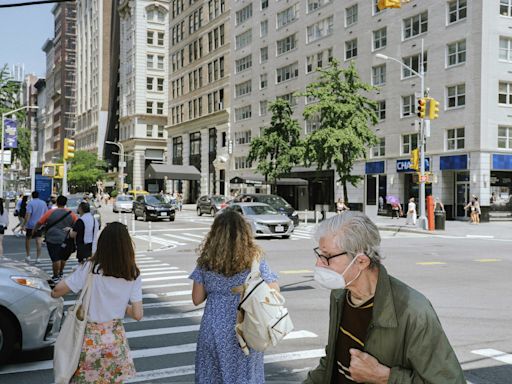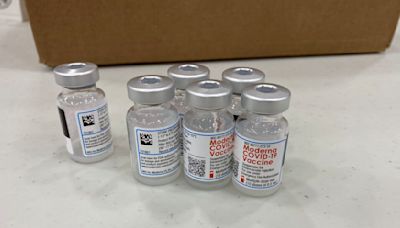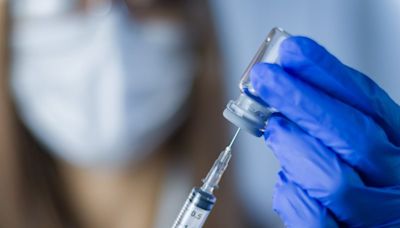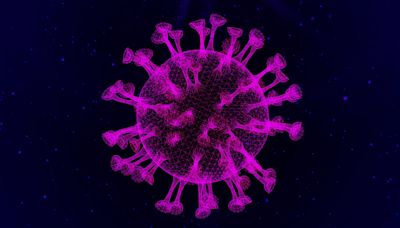Search results
May 8, 2024 · Description of the tables. The tables include: Category: variant of concern (VOC), variant of interest (VOI), or variant under monitoring (VUM).. WHO label: As of 31st May 2021, WHO proposed labels for global SARS-CoV-2 variants of concern and variants of interest to be used alongside the scientific nomenclature in communications about variants to the public.
Feb 6, 2023 · CDC uses viral genomic surveillance to quickly identify and track COVID-19 variants, and acts upon these findings to protect the public’s health. Some variants spread more easily and quickly than others, which may lead to more cases of COVID-19. For the most up to date information about current variants, visit CDC’s COVID Data Tracker.
4 days ago · The difference between JN.1 and these variants is only one or two amino acid changes, so there are still a lot of other places antibodies can bind to. Infection from a variant older than JN.1 is less likely to offer as much protection. Do we know yet how well the current COVID-19 vaccines work against the FLiRT variants?
- What You Need to Know
- Key Definitions
- Types of Classification
- Recombinants
- Summary of Variant Classifications
- List of Variants
- References
- Related Pages
•Viruses like SARS-CoV-2 continuously evolve as changes in the genetic code (caused by genetic mutations or viral recombination) occur during replication of the genome.
•SARS-CoV-2 has consistently mutated over the course of the pandemic, resulting in variants that are different from the original SARS-CoV-2 virus.
•Throughout the COVID-19 pandemic, many variants of SARS-CoV-2 have been found in the United States and globally.
•Scientists use multiple classification systems to describe and communicate similarities and differences between SARS-CoV-2 viruses.
•Mutation: A mutation refers to a single change in a virus’s genome (genetic code). Mutations happen frequently, but only sometimes change the characteristics of the virus.
•Lineage: A lineage is a group of closely related viruses with a common ancestor. SARS-CoV-2 has many lineages; all cause COVID-19.
•Sublineage: A term used to define a lineage as it relates to being a direct descendent of a parent lineage. For example, BA.2.75 is a sublineage of BA.2.
•Variant: A variant is a viral genome (genetic code) that may contain one or more mutations. In some cases, a lineage or group of lineages with similar genetic changes, may be designated by the World Health Organization (WHO) or the U.S. SARS-CoV-2 Interagency Group (SIG) as a Variant of Interest (VOI), Variant of Concern (VOC), Variant of High Consequence (VOHC) or Variant Being Monitored (VBM) due to shared attributes and characteristics that may require public health action.
There are multiple ways in which SARS-CoV-2 viruses are classified. Each classification type can be appropriate, depending on the context in which SARS-CoV-2 is being communicated. SARS-CoV-2 is often discussed in the context of lineages (and sublineages). The most commonly used classification system for lineages is Pango. Nextclade may also be use...
All coronaviruses have the potential to undergo a natural process called “recombination”. This can occur when two different lineages infect the same cell in someone at the same time. This rare phenomenon may affect the characteristics of the virus – including its ability to spread, cause severe disease or make treatments or vaccines less effective. In many cases, recombinant viruses do not have competitive advantages that help them rise.
CDC’s genomic surveillance systems can reliably detect and monitor the spread of variants, including recombinants. When a recombinant does emerge, CDC scientists evaluate and monitor the new recombinant just like any other variant lineage – including how it might be classified or when it should be presented on CDC’s COVID Data Tracker.
Variant of High Consequence (VOHC)
A VOHC has clear evidence that prevention measures or medical countermeasures (MCMs) have significantly reduced effectiveness relative to previously circulating variants. CDC monitors all variants circulating in the United States. In addition to the possible attributes of a variant of concern, variants designated as VOHC include impact on MCMs such as:
•demonstrated failure of diagnostic test targets.
•evidence to suggest a significant reduction in vaccine effectiveness, a disproportionately high number of infections in vaccinated persons, or very low vaccine-induced protection against severe disease.
•significantly reduced susceptibility to multiple EUA or approved therapeutics.
•more severe clinical disease and increased hospitalizations.
References for SARS-CoV-2 Variant Classifications and Definitions
1.Zhou, B., Thi Nhu Thao, T., Hoffmann, D. et al. SARS-CoV-2 spike D614G change enhances replication and transmission. Nature(2021). https://doi.org/10.1038/s41586-021-03361-1
2.Volz E, Hill V, McCrone J, et al. Evaluating the Effects of SARS-CoV-2 Spike Mutation D614G on Transmissibility and Pathogenicity. Cell 2021; 184(64-75). doi: https://doi.org/10.1016/j.cell.2020.11.020
3.Korber B, Fischer WM, Gnanakaran S, et al. Tracking Changes in SARS-CoV-2 Spike: Evidence that D614G Increases Infectivity of the COVID-19 Virus. Cell 2021; 182(812-7) doi: https://doi.org/10.1016/j.cell.2020.06.043
4.Yurkovetskiy L, Wang X, Pascal KE, et al. Structural and Functional Analysis of the D614G SARS-CoV-2 Spike Protein Variant. Cell 2020; 183(3): 739-751. doi: https://doi.org/10.1016/j.cell.2020.09.032
5.*Davies NG, Abbott S, Barnard RC, et al. Estimated transmissibility and impact of SARS-CoV-2 lineage B.1.1.7 in England. MedRXiv 2021. doi: https://doi.org/10.1101/2020.12.24.20248822
•New Variants of the Virus that Causes COVID-19
•Data & Surveillance
•COVID-19 Genomic Epidemiology Toolkit
Last Updated Sept. 1, 2023
Variants that appear to meet one or more specific criteria considered during the COVID-19 pandemic may be labeled "variants of interest" or "variants under investigation" ('VUI') pending verification and validation of these properties. Once validated, variants of interest /VUI may be renamed "variants of concern" by monitoring organizations ...
6 days ago · Here's the latest of what we know about COVID-19 variants in the U.S. What is the current new variant of COVID-19? According to the latest projections published by the CDC, around 28.2% of COVID ...
May 3, 2024 · Since the beginning of the COVID-19 pandemic and with the evolution of the SARS-CoV-2 virus, multiple COVID-19 Variants of Concern (VOCs) and Variants of Interest (VOIs) have been designated by WHO based on their assessed potential for expansion and replacement of prior variants, for causing new waves with increased circulation, and for the need for adjustments to public health actions.





